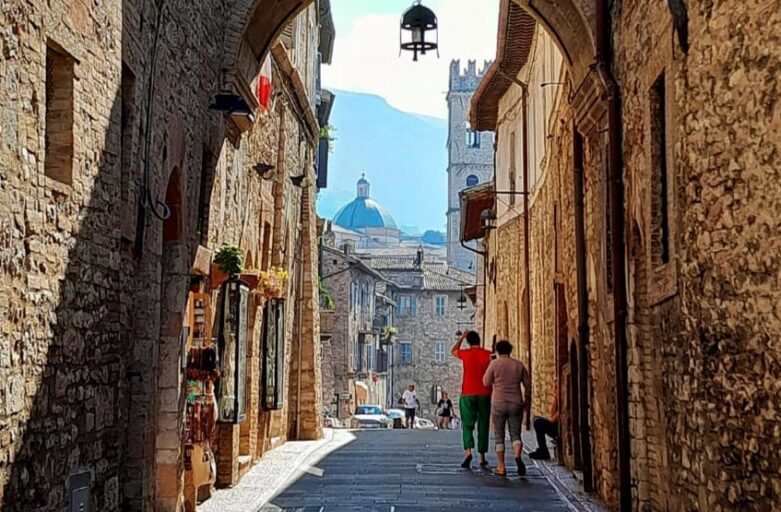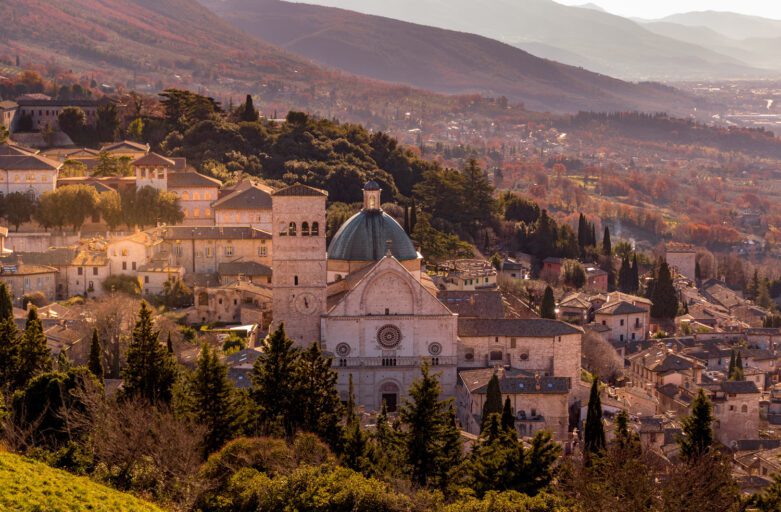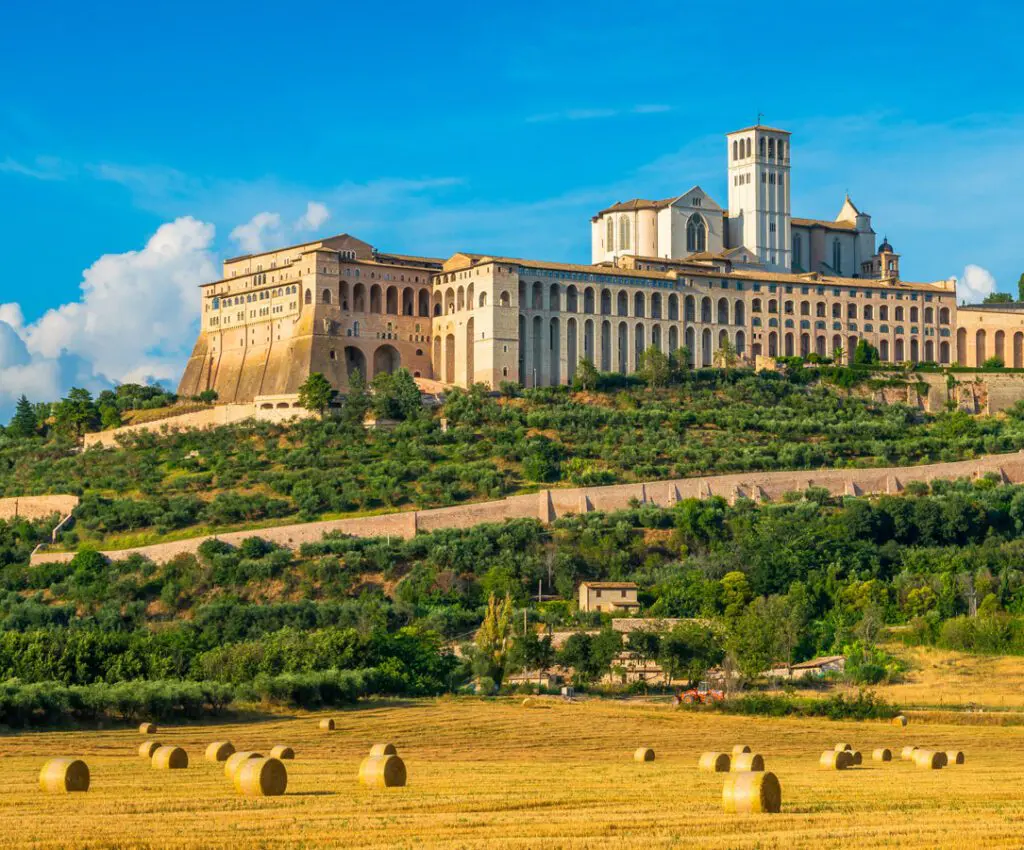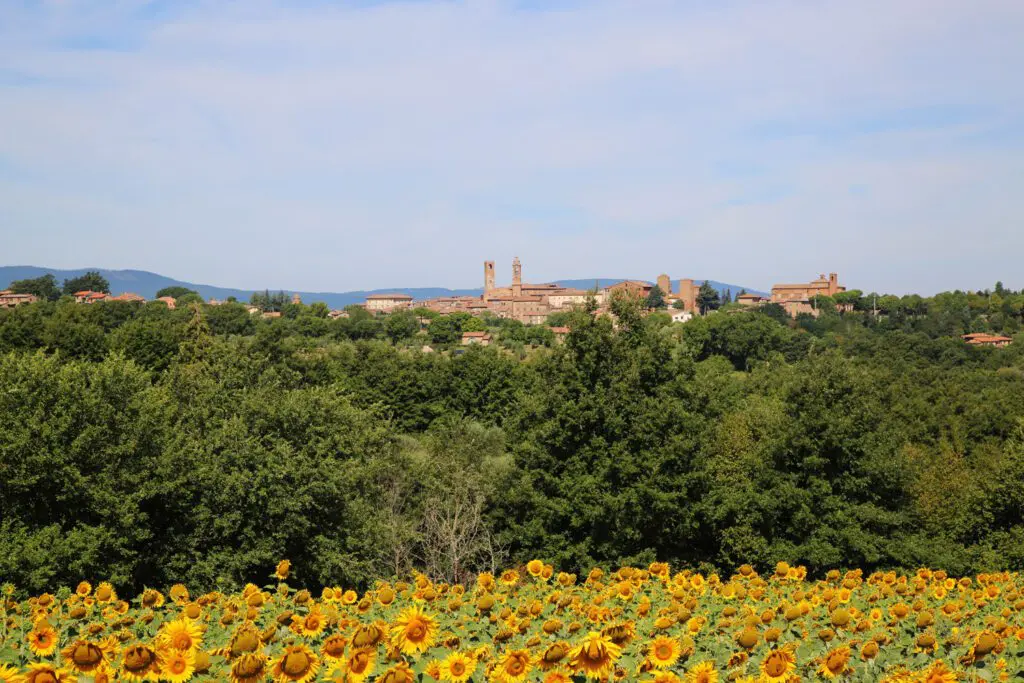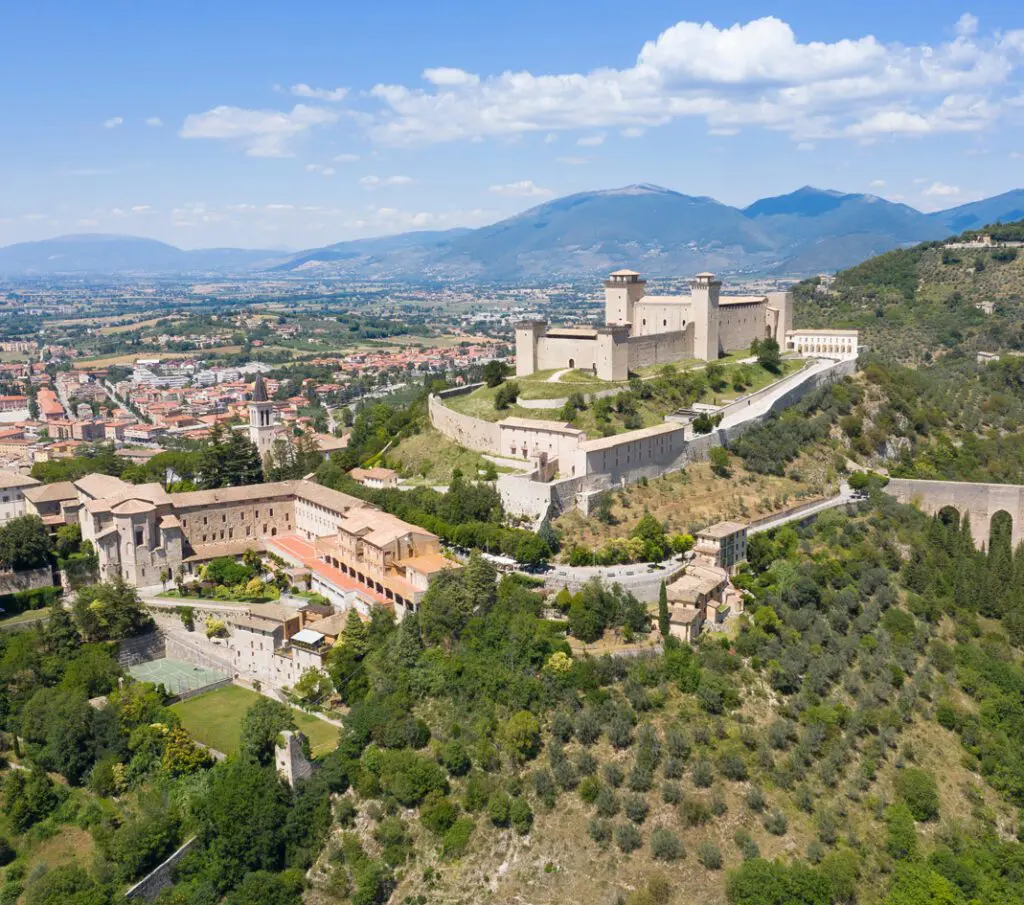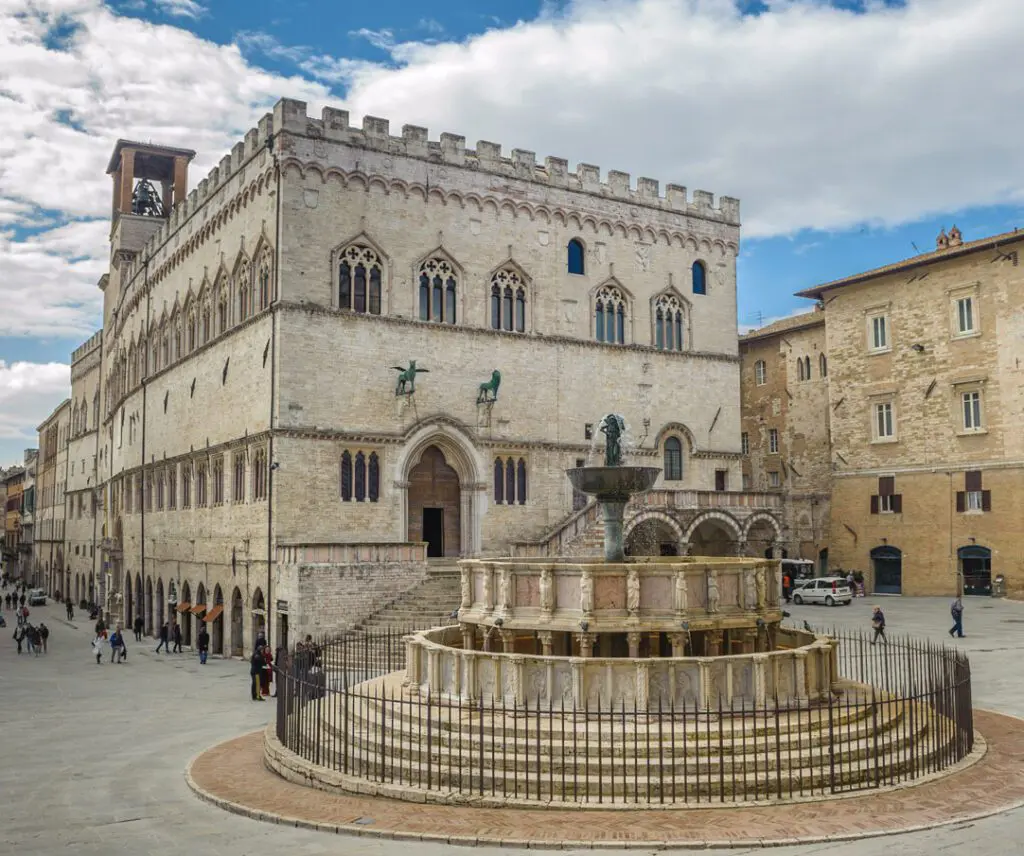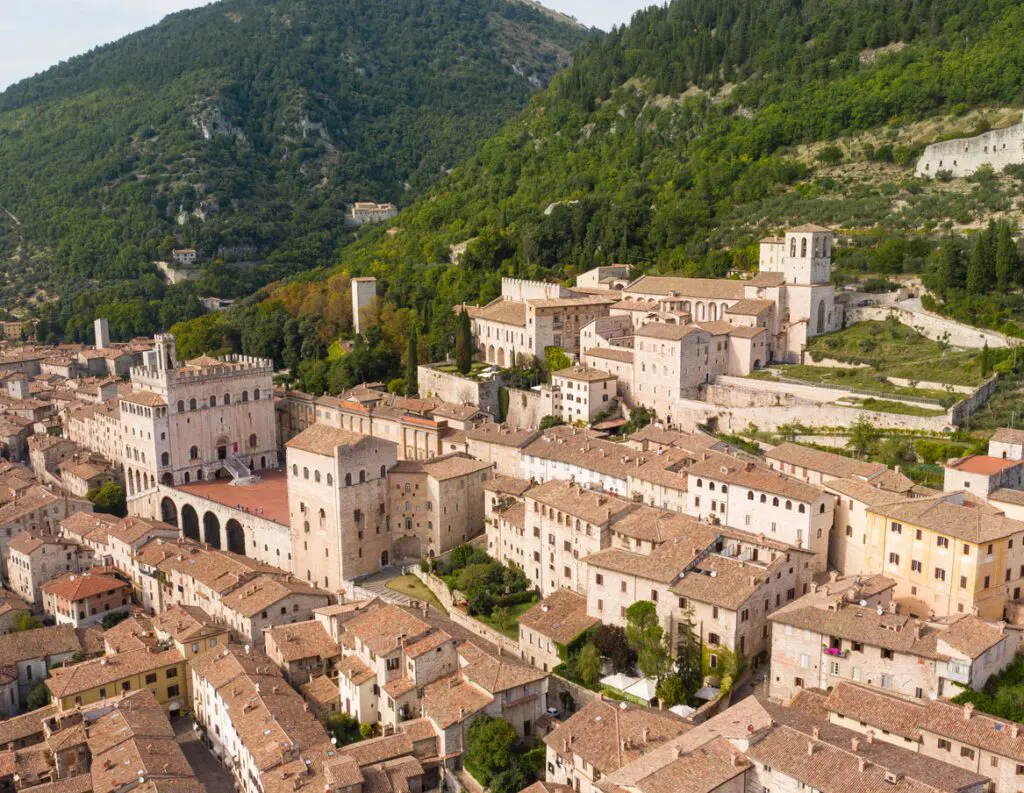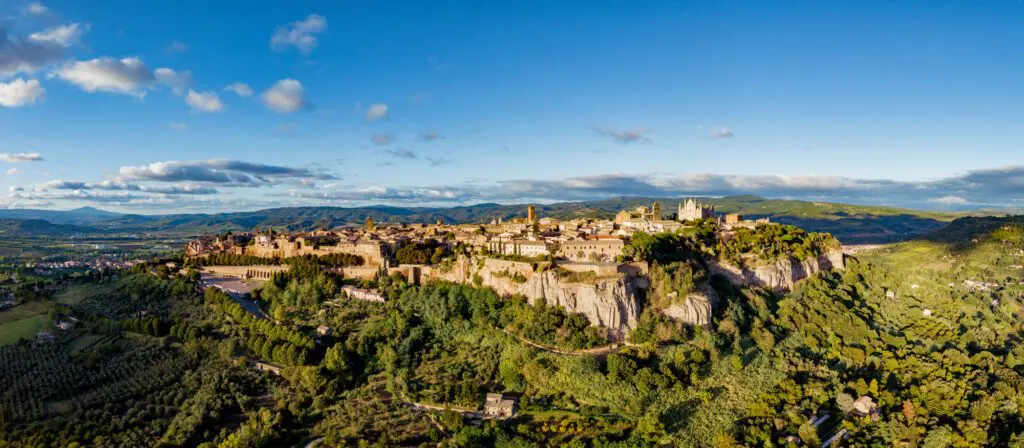Clare, and the Birth of the Second Franciscan Order
When Francis made his spogliazione (the act of stripping of his garments as well as, symbolically, all possessions) in the main square, Clare was little more than a baby. She belonged to a noble Assisi family, the Offreduccis, and was surrounded by the love of her sisters, besides the comforts of her social condition. Yet, she was conquered by Francis' act: within her, now grew the seed of interest toward such men who, after leaving everything, lived by begging but also took care of the lepers in the area of the Porziuncola.
Seven years later, on Palm Sunday 1211, Clare gathered her courage, fled, and joined Francis. She was just 17 years old, but, if we examine how things developed, there can be no doubt that she perfectly knew what she was doing. Opposed by her father, who tried hard to have her go back home, she was soon reached, instead, by her sisters Agnes and Beatrice, as well as her mother after she was left a widow. To quote G. K. Chesterton: “We may at least assume that no friend of what is called the emancipation of women will regret the revolt of St. Clare. She did most truly, in the modern jargon, live her own life, the life that she herself wanted to lead, as distinct from the life into which parental commands and conventional arrangements would have forced her. She became the foundress of a great feminine movement which still profoundly affects the world.”
Of that movement, the Clares, she herself wrote the Rule, asking and obtaining from Pope Gregory IX the “privilege of poverty.” It would be definitively approved by Pope Innocent IV on August 9, 1253, two days before Clare's death.
Basilica of Saint Clare: The Interior
Saint Clare rests in peace under the high altar in the crypt of the church dedicated to her name – whose geographic position is right opposite the Basilica of Saint Francis in the town map. The façades almost mirror each other because of their plain shapes, after the pattern of Romanesque cathedrals. Here, a triangular tympanum including an oeil-de-boeuf (small round hole) and, below it, a rose window cover the main gate. So, the two churches seem to be looking at each other and symbolically hugging, in between, all the people who cross the streets and squares of Assisi.
The Crucifix of Saint Damian
Before the Basilica of Saint Clare was built, in the same place a Church of Saint George existed, currently incorporated in the main structure as a side chapel; it was frescoed by Puccio Capanna and by pupils of the Schools of Giotto and Lorenzetti. The importance of the chapel is mainly due to the fact that it houses the Crucifix of Saint Damian, the very one which talked to Saint Francis, leading him to “enlist” in a different army, a much less equipped, but victorious one: the army of poverty, obedience, and compassion.
The nuns – the “Poor Ladies of Saint Damian,” as they were originally called – who had prayed before this Crucifix, preserved it after Francis' death, and brought it here in 1260, when the convent had been completed and they moved in.
Christus Triumphans and Christus Patiens
The St. Damian Christ, possibly dating back to the 11th century, is shown alive, upright, almost standing, his eyes open: it is the image of Christus Triumphans, i.e., in triumph because of his resurrection.
In the basilica, another Crucifix is placed above the high altar; the work of an unknown artist, simply called the Master of Saint Clare, it dates back to 1255-1260. In this case we see a Christus Patiens, “in his Passion,” a melancholy figure with the marks of suffering on his face and body, and dead. His torso and legs too are bent, unbalanced, as if yielding to pain and affliction.
So, within a span of few feet, the visitor can clearly perceive a historic shift in Medieval art. This is highlighted by the differences in painting and sculpture during the centuries, where a typically Western process will more and more stress the human side of pain and suffering in Christ; that would have been unthinkable in Byzantine culture.
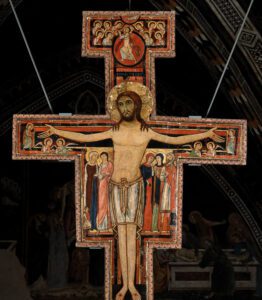
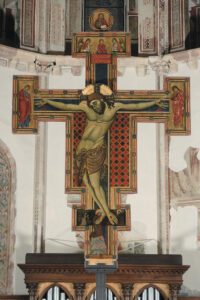
The Altar
The high altar is enclosed in a loggia with twelve small polygonal pillars of the 15th century – as many as the Apostles. A railing in wrought iron completes the work. In the cross vaults over the altar (the Gothic ceiling of the one-naved church), you can see frescoes by Palmerino di Guido. The subject matter, mirroring the rib vaults in the Lower Basilica of Saint Francis, is the glory of virginity. The narrative develops through a set of stories; namely, starting from the rib vault that faces the altar:
- Virgin Mary with the Infant Jesus, and Saint Clare
- Saint Agnes (virgin of the third-fourth centuries) and Saint Agnes of Assisi, sister of Clare
- Saint Catherine (of Alexandria) and Saint Margaret
- Saint Cecily and Saint Lucy
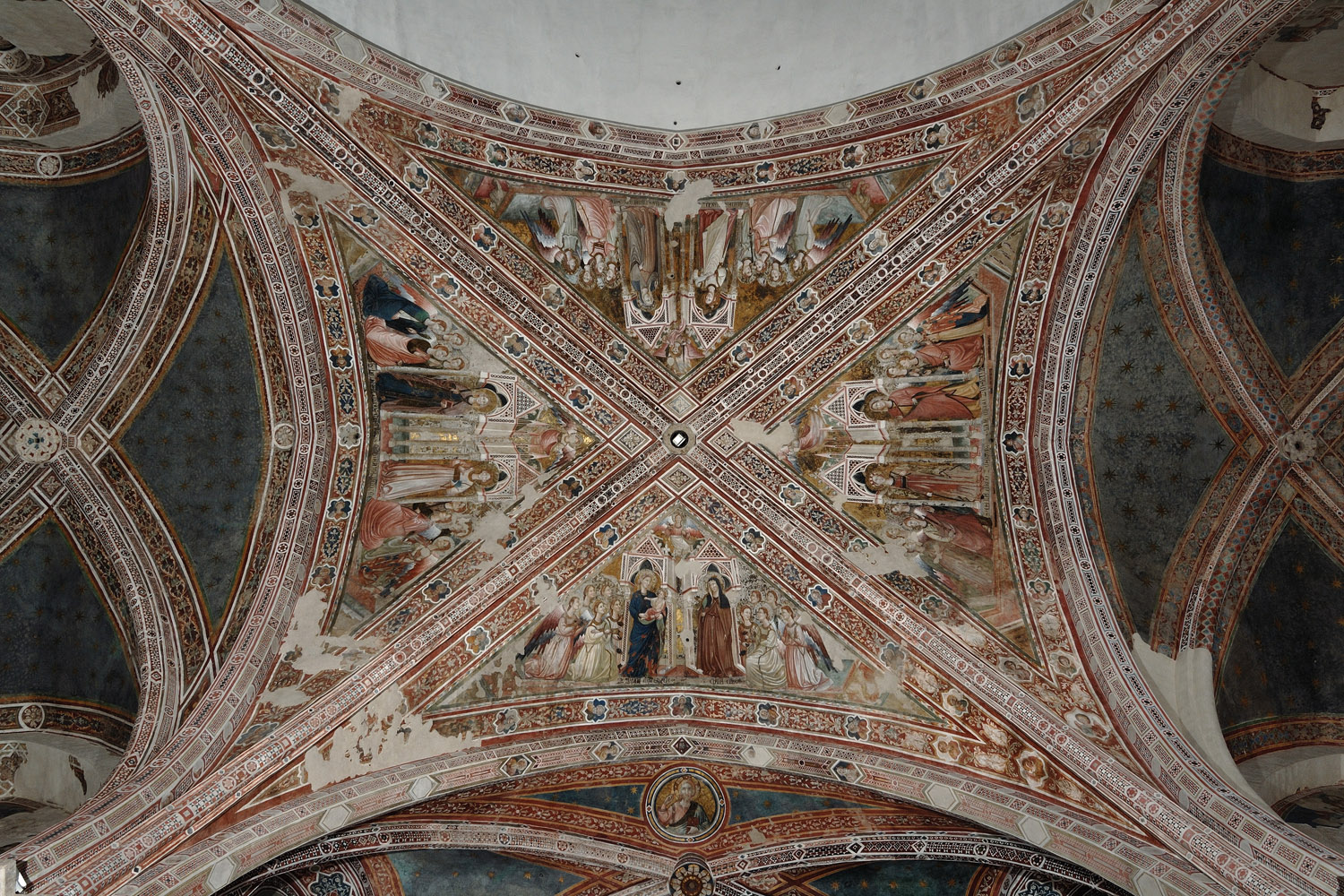
The Transept
In the left transept a great wood panel (276 x 163 cm) stands out, it also being ascribed to the Master of Saint Clare (1283). In its middle, the Saint almost completely fills the vertical section of the panel. On both sides, eight square pictures report episodes from her life. Starting from bottom left, we see the episode in which the bishop came down from the altar in order to give a palm branch to the girl, who, out of humbleness, had remained still in her place during the Mass on the Sunday before Easter. Then, counterclockwise: Clare's family opposing the choice of her and Agnes; miracles that happened when they lived at San Damiano; ; up to Clare's funeral officiated by Pope Innocent IV and the curial Cardinals, encircled by the whole population of Assisi.
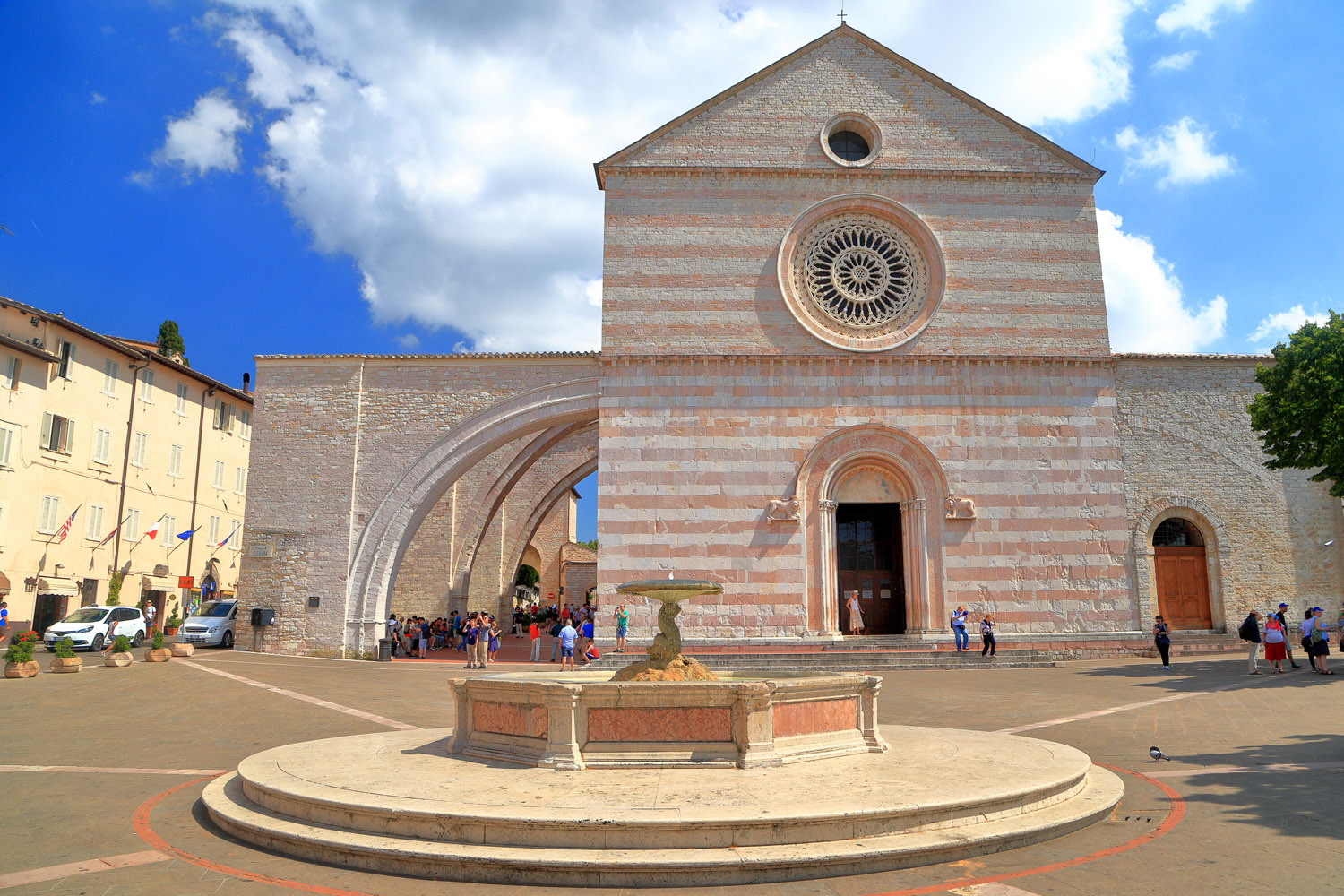
Basilica of Saint Clare: The Outside
The façade in two colors, with bands of white and rose stones from Mount Subasio, is horizontally crossed by two cornices that divide the section with the gate from the rose window, and the window from the tympanum. On the left wall (when looking at the façade) a set of rampant arches, added in the 14th century, support the building while not making its shape look heavier. Quite remarkable is the square in front of the church, whence you will be able to admire a wonderful landscape. On a sunny day, it is possible to span the whole Umbrian Valley, from Montefalco to Perugia.
Here you may hear the voices of History, of Nature, of the lives of all those people who – sated with human adventures – came here and asked, rather than for material things, for peace; and got it.
INFORMAZIONI
Località
Piazza Cahen, 5B, 05018 Orvieto TR
Orari
Giugno-Agosto: tutti i giorni 9:00-20:00
1-22 Settembre: tutti i giorni 9:00-19:00
5-11 Ottobre: tutti i giorni 9:00-19:00
12-19 Ottobre chiuso per lavori di manutenzione.
Dal 20 ottobre: tutti i giorni dalle 9:00-19:00
La biglietteria chiude 45 minuti prima dell’orario di chiusura.
Contatti
Email: info@genesiagency.it
